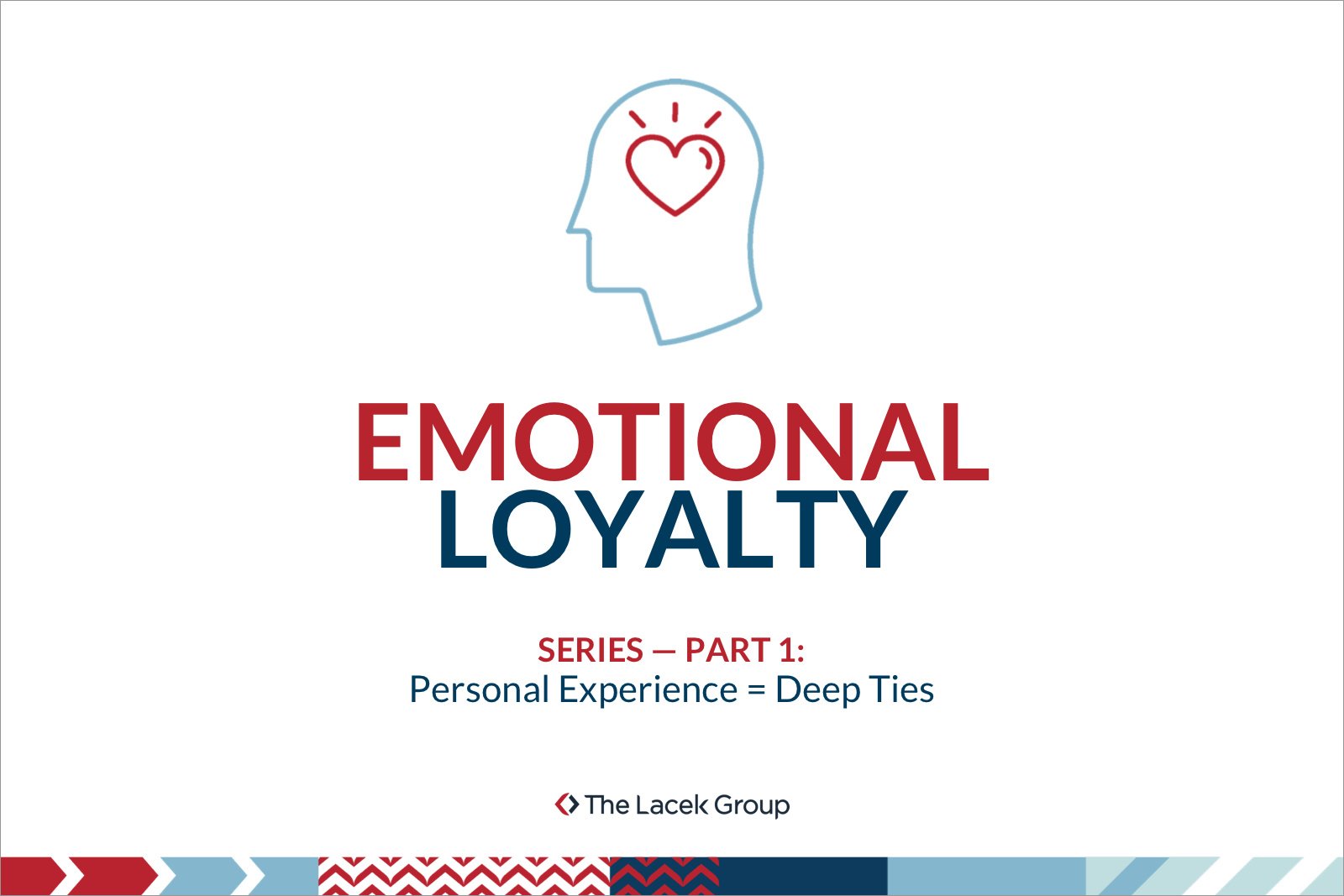Human-Centered Design Boosts Brand Devotion

Despite rapidly emerging technologies and post-pandemic societal shifts, customer loyalty is the lifeblood of successful brands. That essential truth remains unwavering in today’s marketplace. The customer experience is saturated with apparently endless brands, products, and offerings. As consumers, everything we want is a few clicks away and loyalty programs reward us for our spending at every turn. But given that we’re also more demanding consumers than ever, it’s worth asking a basic question: How can we create strategies and programs that are truly customer-centric?
Enter human-centered design, an approach that places consumers at the heart of brand positioning, product design, and service offerings. By infusing warmth, empathy, and understanding into the experience, brands can go beyond transactions to forge deeper connections with their customers and inspire lasting loyalty.
Let’s dive into how marketers can, and are, leveraging the principles of human-centered design to thrive in today’s competitive marketplace.
Understanding human-centered design
Human-centered design is more than just a buzzword. It’s a philosophy that prioritizes empathy and understanding. It involves thoroughly exploring and comprehending consumer needs, desires, and pain points through research and interviews, and then designing products, services, experiences, and rewards around those insights. By acknowledging the human element in every interaction, brands can create meaningful and memorable experiences that resonate with their audiences.
It’s probably no accident that this human-centered approach is so effective in our post-pandemic world. As we emerge from a time during which most people reported feeling isolated, consumers now crave being heard and valued by brands. According to The Lacek Group’s global research study, 73% of consumers say it’s critically or somewhat important that brand representatives know who they are and understand their preferences. In addition, 50% of respondents report that a brand’s reputation, actions, and values have become increasingly important to their decisions around joining and/or engaging with a loyalty program. In short, consumers are no longer satisfied with impersonal, one-sided brand relationships. That means it’s more important than ever to truly understand your customers.
Building authentic connections
At the core of human-centered design lies the goal of building authentic customer connections. Consumers today don’t just want to purchase products or services; they seek experiences that make them feel seen, heard, and valued.
 Brands must recognize customers as individuals rather than data points and basic demographics. By employing human-centered design principles, brands that strategize beyond transactions to forge emotional connections are building long-term relationships with customers.
Brands must recognize customers as individuals rather than data points and basic demographics. By employing human-centered design principles, brands that strategize beyond transactions to forge emotional connections are building long-term relationships with customers.
Take Starbucks Rewards, for example. This loyalty program isn’t just a means to accumulate points; it’s a platform that seemingly understands and caters to customers’ food-and-beverage preferences. From greeting users by name, to remembering their favorite drinks and treats, to offering personalized recommendations, the platform recognizes and values members as individuals at every step. Starbucks Rewards transforms a simple coffee purchase into an identity-affirming ritual that leaves customers feeling seen and valued. It also elevates a brief exchange into a small moment of reward and luxury. Starbucks has transformed simple transactional relationships into daily opportunities to create emotional bonds between customers and the brand.
Discerning customer needs
To build these authentic connections, understanding customers’ needs is crucial and requires diligent research—conducting surveys, interviews, and focus groups to gather insights about preferences, pain points, and aspirations. Once a brand has this information, it can tailor offerings to effectively address customers’ needs plus win trust, inspire loyalty, and differentiate itself in the marketplace.
Netflix, for instance, thrives on understanding the varied preferences of its 238 million global subscribers. Through its sophisticated algorithms, the platform tailors recommendations based on individual viewing habits—effectively demonstrating that it understands each user’s entertainment needs. This personalized approach creates a bond of trust, enhancing the likelihood that customers stick with Netflix—despite the hotly competitive streaming scene.
Creating delightful experiences
Human-centered design doesn’t want to just meet expectations; it aims to surpass them. By leveraging customer insights, brands can create experiences that exceed customer expectations and leave a lasting impact. Whether it’s simplifying the purchasing process, personalizing recommendations, or designing intuitive interfaces, every touch point should be crafted to surprise and delight customers. These positive experiences foster loyalty and generate positive word of mouth, attracting new customers to the brand.
Consider the seamless experience of Marriott’s loyalty program. Marriott Bonvoy is central to the brand’s website—creating a unified experience for customers. Guests engaging with Marriott Bonvoy receive multiple point-earning opportunities, special perks, and partnership offers that provide additional benefits. For example, Marriott Bonvoy Moments provides members with unique, once-in-a-lifetime experiences. Plus, personalized communications keep guests engaged throughout their customer lifecycle. Additionally, the brand leverages both social media influencers and engagement campaigns to encourage user-generated content. The result? Marriott is viewed as both relatable and aspirational. This unified, yet personalized, experience excites customers and creates an elevated user experience that wins their loyalty time after time.
Building customer-centric products and services
Influencing product and service development is key to human-centered design. By involving customers in the design process—not only through initial research but also with follow-up surveys, feedback sessions, and usability testing—a brand can create products that deeply resonate with its audience. This customer-centric approach ensures that the final product meets their needs effectively and becomes an integral part of their lives. By prioritizing user experience, and continually iterating based on customer feedback, a brand can foster loyalty and ensure its products remain relevant.
Nike has established itself as a pioneer of customer-focused innovation, thanks to its emphasis on understanding the needs, desires, and behaviors of athletes and fitness enthusiasts. Take, for example, Nike’s Flyknit technology, which caters to both athletes’ requirements and style preferences. Or consider its products designed by women for women that address real-world challenges like coping with your period on the soccer field. Nike applies this same attention to human needs to personalized training apps and digital platforms, creating experiences that are tailored for each user. By placing the customer at the core of its decision-making, Nike’s innovative products are relevant to its target audience and lead to long-term brand loyalty.
Nurturing customer relationships
A successful brand understands that loyalty isn’t a one-time achievement but an ongoing effort. A brand applying human-centered design nurtures customer relationships through personalized marketing campaigns, loyalty programs, and ongoing communications to engage and satisfy customers. By continuously demonstrating its commitment to meeting customer needs and exceeding expectations, a brand can cultivate enduring loyalty.
Delta Airlines works to strengthen its relationship with customers at myriad touch points, from sending personalized handwritten thank-you notes to Delta SkyMiles members for flying to picking up a forgotten passport so a pair of newlyweds could make their connecting honeymoon flight. Delta demonstrates a commitment to treating passengers with warmth and empathy. Not to mention, personalized communications offer special birthday perks, reminding members of benefits, and more. Delta’s above-and-beyond approach to service exceeds consumer expectations and fuels lasting loyalty.
In an era of fierce competition and rapidly evolving customer expectations, human-centered design has emerged as a powerful strategy for building brand loyalty. By placing customers at the forefront of every decision, brands can forge authentic connections, create delightful experiences, and nurture long-lasting relationships. An investment in human-centered design is an investment in the future—where customer loyalty isn’t just a goal but a natural outcome of genuine care and understanding.
Let’s embrace this approach by bringing warmth, empathy, and humanity to our loyalty programs, reshaping how we engage with our customers and paving the way for lasting success.
Rachel Foss is senior manager, strategic services, for The Lacek Group, a Minneapolis-based data-driven loyalty, experience, and customer engagement agency that has been delivering personalization at scale for its world-class clients for more than 30 years. The Lacek Group is an Ogilvy company.

